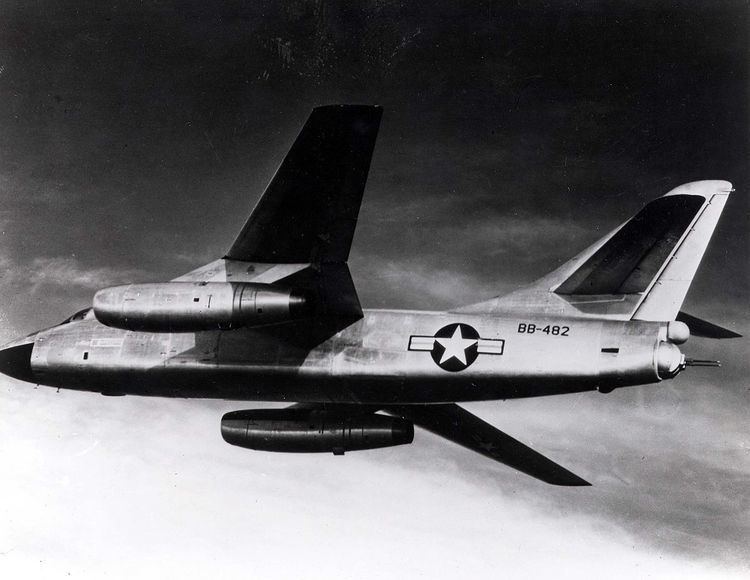Country United States | Part of Tactical Air Command | |
 | ||
Active 1943-1945; 1946-1947; 1953-1969 Branch United States Air Force Role Reconnaissance and Electronic Warfare | ||
The 9th Tactical Reconnaissance Squadron is an inactive United States Air Force organization. Its last assignment was with the 363d Tactical Reconnaissance Wing at Shaw Air Force Base, South Carolina, where it was inactivated on 1 September 1969.
Contents
761st Bombardment Squadron
Activated as the 761st Bombardment Squadron (Heavy) in mid-1943; assigned to II Bomber Command for training with B-24 Liberators. Primarily trained in New Mexico and Utah. Received deployment orders for the Mediterranean Theater of Operations (MTO) in August 1943. Moved to Georgia and Virginia where the squadron flew coastal patrol missions over the Southeast, October 1943-January 1944 while station in Italy was being constructed.
Deployed to Southern Italy in January 1944; entered combat in January 1944, being assigned to Fifteenth Air Force 55th Bombardment Wing. Engaged in very long range strategic bombing missions to enemy military, industrial and transportation targets in Italy, France, Germany, Austria, Hungary, Romania, and Yugoslavia, bombing railroad marshaling yards, oil refineries, airdrome installations, heavy industry, and other strategic objectives.
The squadron flew its last World War II combat mission on 26 April 1945. After V-E Day, was assigned to Green Project which was the movement of troops from Europe to the United States via the South Atlantic Transport Route. B-24s were modified with sealed bomb bays, removal of all defensive armament and internal fuselage equipped with seating to carry approximately 30 personnel. Was assigned to Air Transport Command at Waller Field, Trinidad and to Natal, Brazil. Moved personnel from Dakar in French West Africa where personnel were transported across the South Atlantic to Brazil and eventually to Morrison Field, Florida via Trinidad. Provided air transport until the end of September when the unit was inactivated.
9th Tactical Reconnaissance Squadron
Reactivated by the Twentieth Air Force 314th Composite Wing in April 1946 as the 9th Reconnaissance Squadron, Very Long Range, Photographic assigned to Johnson Air Base, Japan. In Japan, the squadron flew various reconnaissance light and heavy bomber aircraft performing mapping missions over Occupied Japan; Kore]; Okinawa; Indochina; China] and other ares under Far East Air Forces control after World War II. Also included classified missions over the Soviet Far East. The squadron was inactivated in October 1947 and its personnel, equipment and mission were transferred to the 31st Reconnaissance Squadron.
The squadron was reactivated in July 1953 by Tactical Air Command (TAC) as the 9th Tactical Reconnaissance Squadron (Electronics and Weather) at Shaw Air Force Base, South Carolina. It was initially equipped with Douglas RB-26 Invader light bombers equipped for night reconnaissance missions.
In January 1956, the squadron was the first in the Air Force to receive jet powered Douglas RB-66B Destroyers. The RB-66B was the first operational model of the B-66. Although initially, the RB-66B had a limited all weather capability, its arrival permitted the retirement of the obsolescent RB-26s. In February 1956 it began to upgraded to RB-66C ferret (electronic reconnaissance) planes, once again being the first squadron to fly this model of the Destroyer operationally. The squadron added the WB-66D Destroyer weather and air sampling reconnaissance aircraft in June 1957, again being the first unit in the Air Force to fly this model. For the first time, TAC had the capability to perform the synoptic weather reconnaissance mission. Prior to the arrival of the WB-66, high altitude weather information was gathered by a Lockheed T-33 with an observer in the back seat.
The unit flew reconnaissance missions as well as functioning as a B-66 training squadron until inactivated in 1969 due to budget reductions and consolidation of the B-66 force, which was mostly deployed in Southeast Asia engaged in combat operations during the Vietnam War.
